

Designation:CER-12 Satyros Tactical Corps Alpine Division Combat Engineering Robot |
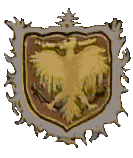
|
||||
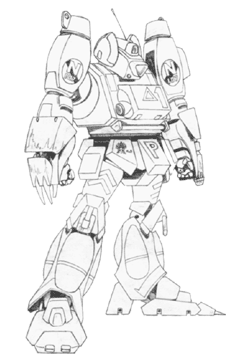
|
|||||
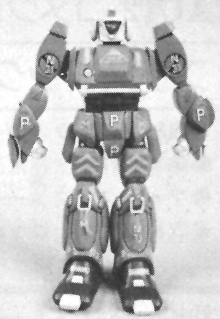
Typically, one of each will be mounted.
(Mk. I only)
(Mk. II only)
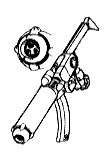
Common optional pods for used by the hands:
|

|
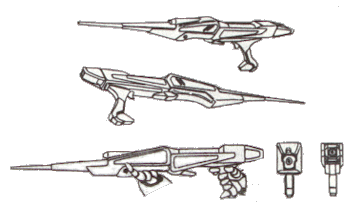
|
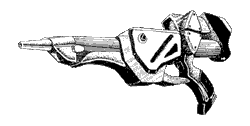
|
|
The armor on the Satyros is a new development in low-mass composite-materials Chobham plating that became the standard for all Terran mecha after its application to the VQ-6A Vandal. Aside from the respectable protection provided against projectiles, missiles, and other kinetic weapons, this armor is also resistant to plasma globes (annihilation discs), lasers, and to a lesser extent, particle guns, owing to the fact that the armor can flake off and evaporate in layers under fire from such high-energy weapons, taking much of the weapon's energy and converting it into the latent heat of sublimation in the armor. The armor stops all small arms and heavy infantry weapons fire, provides excellent resistance to light mecha-mounted weaponry, such as the Zentraedi 22.3mm HE autocannon round, and fair resistance to medium mecha-mounted weaponry, such as the Valkyrie's 55mm APFSDS round.
The Satyros provides full protection from nuclear, biological, and chemical hazards, using a fully sealed cockpit modual activated by radiation and hazardous chemical sensors, or manually when biological warfare conditions are anticipated. The module is also armored and gives the Satyros the option of operating off-planet on the Moon or elsewhere in the system. The internal consumables supplies can provide atmosphere purification for one week maximum on Earth and 48 hours in a hostile environment such as the Moon or Mars.
The CER-12 Satyros, commonly known by it's nickname "Billy Goat", at first seems to mirror the CER-11 Dryad's mission and capabilities. But where as the Dryad was originally a non-military construction robot, the Satyros was devised by Bofors as an armored, jump capable, combat engineering robot from the get go. The Dryad was optimized for jungle and marshy environments, the Satyros on the other hand was meant to be used to reclaim terrain-embedded Zentraedi warships, to help construct defensive emplacements in mountainous terrain and to provide mobile hardened command, control, communications, and intelligence (C3I) relay stations for mountain-based infantry. After the Zentraedi Holocaust and the following years of unrest and uncertainty, many communities desired more protective locations in out of the way locations, such as canyons and blast craters. As such, the Satyros was expected to assist in building these communities, when their duties didn't keep them occupied elsewhere. With its powerful winches, the Satyros was also used as an armored recovery vehicle and in maintenance areas to lift heavy equipment.
Due to the poor radio propagation environment of mountainous terrain, the Satyros assisted the Alpine forces of the Tactical Corps in maintaining communications between their units. This battloid was equipped with a powerful communications relay capability, which could be boosted by the addition of high gain whip antennas. It was also equipped with a powerful radar set for a non-combat battloid that was evidenced by the twin arrays located to either side of the head.
The Mk. I was an unarmed military construction/salvage/mining robot for use in the mountains. With the Southern Cross Armies beginning as a unified command of the RDF units in South America, they quickly discovered the vulnerability of this mecha in a combat situation without built-in weapon systems. Therefore, the Southern Cross Army Robotech Research Department (SCAR) devised an armed refit for this battloid to assist in mountainous combat arenas like the Andes mountains. After years of use of the Mk. I, the Southern Cross designed a newer version optimized for its combat role as well as keeping its engineering capabilities to support the Southern Cross in mountainous terrain, designated the Mk. II. The refit consisted of the addition of a MRL-15 missile launcher containing 15 Hammerhead missiles, which were one of the most common (and capable) missiles in the ASC's inventory. It also added a laser range finder/designator, which was conspicuously missing up to that point.
Visually, the Satyros was a very distinctive mecha. With it's large shoulders, clawed arms and hands and long skinny legs it looked very close to it's Greek namesake. The feet were long and thin, giving them the agility needed for mountaineering. It also had mounting points on the feet for adding spikes to assist in climbing. The arms could mount either a claw or a grappling hook (usually one of each). It also provided accessories to support an infantry team. Knee rings for mounting ropes and a chest bar for rigging off of. The Satyros had wrist spikes to assist it in climbing as well as fully rotating shoulder and upper arm joints. It was also limited-flight-capable, which proved a life saver any time a pilot found himself involuntarily airborne.
The Satyros saw combat in the Malcontent Uprisings in the upper Andes, fought the Robotech Masters all over the Western Hemisphere and it battled against the EBSIS in Eastern Europe after the Second Robotech War. They acted as combat engineers and as infantry support battloids. Later, during the Invid Occupation, they served in a limited capacity with freedom fighters where their role in the fighting was not relegated to the mountains. No complete, functional models are known to exist today.
See additional design notes.
Return to Southern Cross Mecha Index.
Go to Robotech Reference Guide Home Page.
Robotech (R) is the property of Harmony Gold. This document is in no way intended to infringe upon their rights.
Content by Rob Morgenstern and Tim Wing, with Pieter Thomassen